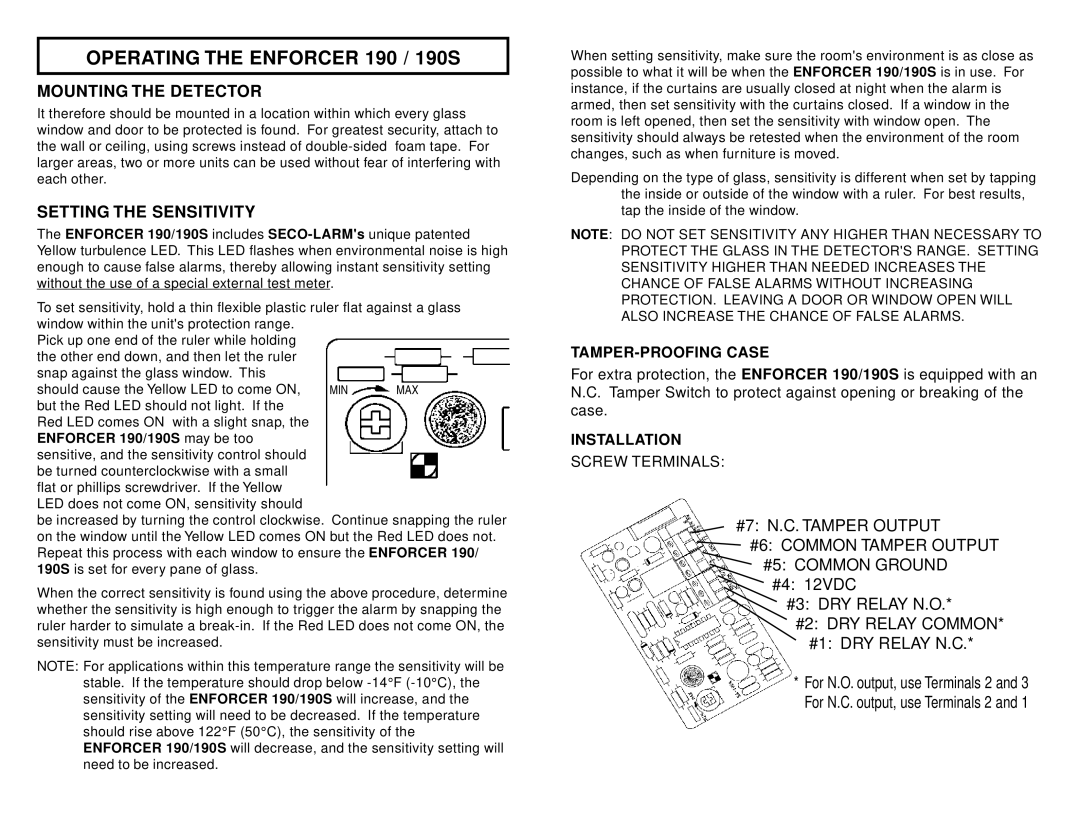190, 190S specifications
SECO-LARM USA is a renowned manufacturer of security and automation products, and among its standout offerings is the SECO-LARM USA 190 and 190S series. These models are particularly known for their reliability and advanced capabilities, making them essential components in various security systems.One of the main features of the SECO-LARM USA 190 and 190S is their robust design. These devices are built to withstand various environmental conditions, ensuring they can perform seamlessly in both indoor and outdoor settings. Their durable casing helps protect against dust and water, which is critical for devices exposed to the elements.
Both the 190 and 190S models utilize advanced technologies that enhance their functionality. They are equipped with infrared sensors, allowing for effective motion detection. This feature is invaluable for security applications, as it enables the devices to identify unauthorized movements in their vicinity, triggering alerts or activating connected systems.
Another notable characteristic of these devices is their ease of installation and integration. The SECO-LARM USA 190 and 190S are designed with user convenience in mind, featuring a plug-and-play setup that simplifies the installation process. This user-friendly design allows for seamless integration into existing security frameworks without requiring extensive modifications.
The versatility of the SECO-LARM USA 190 and 190S series cannot be overlooked. These models are compatible with a variety of security systems and can be utilized in residential, commercial, and industrial applications. Their adaptability makes them suitable for a wide range of scenarios, from home security setups to complex surveillance projects.
In terms of performance, the SECO-LARM USA 190 and 190S excel in providing accurate and timely notifications. The advanced algorithms utilized in their design ensure that false alarms are minimized, allowing users to respond quickly to genuine security threats. This reliability in performance is critical for users who depend on these devices to safeguard their properties.
Additionally, these models often come with customizable settings, allowing users to tailor the sensitivity and response capabilities to best suit their specific needs. This level of flexibility enhances their effectiveness and ensures that users can maximize their security measures.
Overall, the SECO-LARM USA 190 and 190S series stand out due to their robust construction, advanced technologies, ease of installation, versatility, and reliable performance. These features combine to create a solution that not only meets but exceeds the expectations of security professionals and consumers alike.

